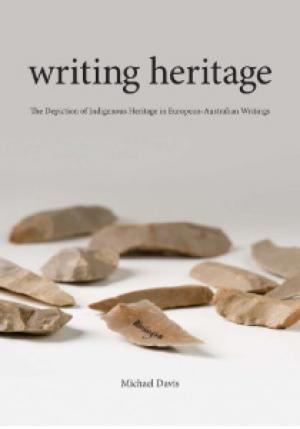Archive
Raymond Evans completed his History of Queensland on a Brisbane verandah in late 2005. The Howard government was still in power, and Premier Peter Beattie was grappling with regional health care. By the time of publication, John Howard was gone, and Beattie had resigned – though not before contracting Ross Fitzgerald to write the official state history for Queensland’s sesquicentenary in 2009.
... (read more)Amongst Holocaust accounts, literature and writing, there have emerged four distinctly identifiable forms: the academic historical text, exemplified by historians such as Martin Gilbert and Philip Friedman; literature, by writers such as Eli Wiesel and Primo Levi; the allegorical tale, such as Markus Zusak’s The Book Thief (2005), Karen Hesse’s The Cats in Krasinski Square (2004), and Art Spiegelman’s Maus: A Survivor’s Tale (1986); and the anecdotal account, such as this book by Sabina Wolanski, Destined to Live: One Woman’s War, Life, Loves Remembered.
... (read more)John Leonard Press produces beautiful books of poetry. Proof of the editor’s precise standards, L.K. Holt’s Man Wolf Man features a fine, bullet-sized insignia of a wolf man’s head after the title page. But as Leonard has shown in publishing three (out of four) first books by young Australian women poets, he is not bound to tradition. Holt’s book, with its combination of formal style and feminist obscenity, and Elizabeth Campbell’s Letters to the Tremulous Hand, which includes poems about medieval scribes and human trafficking, suggest that Leonard’s aesthetic is more radical than most. Could it be time for young Australian women poets to shine? Are these two poets among the bright young things of a Generation of ’08?
... (read more)In Queensland, as in the other Australian colonies in the nineteenth century, European settlers wrested control of the land from its indigenous owners by force and the threat of force. All colonies used police for this purpose, but Queensland went further than any other in creating a police corps specifically for the subjugation and dispossession of the Aborigines. Queensland’s Native Police comprised small units of indigenous troopers, commanded by European officers. These were moved around the colony to wherever on the leading edges of European expansion the Aborigines were most ‘troublesome’. Their tactics were simple and brutal. Whether the targets were entire Aboriginal groups or individual suspects, their standard strategy was lethal force in engagements that were known euphemistically as ‘dispersals’.
... (read more)Last year, the fifth of the war, America sent another forty thousand troops to Iraq to halt the rise in violence. So far this surge seems to have worked: the number of Iraqis killed per month has fallen from over three thousand per month a year ago to under one thousand, and American combat deaths have fallen as well, from over one hundred to less than forty per month. Now the extra troops are being withdrawn again. We will see whether those grim numbers bounce back up again, and whether Iraq is any closer to the peaceful, united and pro-Western country that those who planned the invasion so blithely expected. The signs in recent weeks have not been promising.
... (read more)There must be some part of the human psyche which secretly thrills at the idea of inflicting unbearable pain on others. How else to explain the fact that torture has been practised in every civilisation in every age? How else to explain the desperate cruelty and awesome ingenuity of the torturer’s craft?
... (read more)There is a term used in archaeology to describe the process of collecting material from the top of the ground as opposed to digging or excavating for it. It’s called ‘surface collection’. I learnt this recently when I read a new book by that name on archaeology and heritage in South-East Asia by the Sydney-based archaeologist Denis Byrne. It was a useful concept to have in mind as I read Writing Heritage: The Depiction of Indigenous Heritage in European–Australian Writings, which overflows with vignettes and descriptions about men (and it was mostly men) who spent their time scouring the Australian landscape’s surface for things made by indigenous people.
... (read more)Body, Brain and the New Science of Communication: Turns of Phrase, Figures of Speech
communication / community / commune / communion / common : mingle together as one
Let us begin with two remarkable observations:
1. Apes cannot speak
2. Apes cannot play a piano
Why should this be the case? After all, great apes such as chimpanzees and gorillas are our closest living relatives, and share most of our genetic heritage. They have well-formed hands that they can use to manipulate their environment. Their brain is more like ours in its structure and organisation than that of any other animal; from it they generate some disturbingly familiar behavioural traits.
... (read more)John Button was rare man, rare for any time, any place and in any calling. The public face – the Senator John Button, long-time Leader of the Government in the Senate, the hands-on, hard-hat minister of the Button car plan, the policy innovator and party reformer, the straight talker, unbridled political wit, notorious doodler, note writer, and scribbler of politically incorrect postcards to Senator Bronwyn Bishop (imagine it!) – that is the John Button Australia knows. His achievements have been many and they are exemplary.
... (read more)






